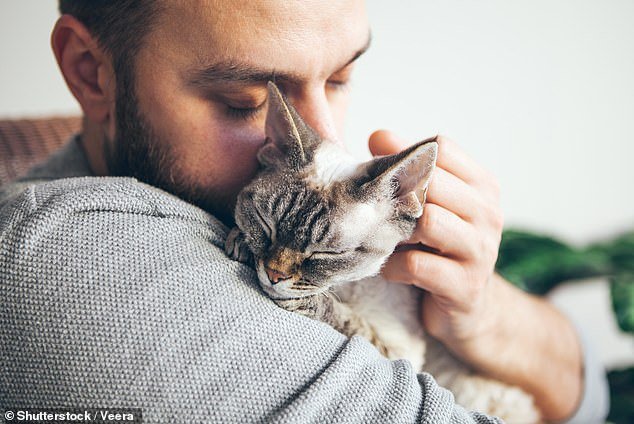Another four domestic cats in the US have died from H5N1 bird flu.
Two of the pets in South Dakota were not linked to cattle dairy products – the first time there have been cases in pets not linked to outbreaks on farms.
The development could be significant because it suggests the virus is getting closer to humans.
South Dakota’s state veterinarian, Beth Thompson, said there were no livestock on the property where the pets died, but said it is not yet known how cats became infected.
Two other cases of bird flu in barn cats on commercial dairy farms, where cows were also infected with H5N1, have recently occurred in Michigan: one in Isabella County and one in Ionia County, where two Virginia opossums were also infected.
This is the first time that there have been cases in domestic animals not linked to cows infected with H5N1

The map above shows the states that have reported bird flu infections in dairy herds
Only one person so far — a farmer in Texas — has tested positive for the H5N1 virus in this outbreak, but the CDC fears many more could be infected and not come forward.
It comes as the FDA’s top official revealed the agency is preparing for a bird flu pandemic in humans that could kill one in four of the people it infects.
The two cats with no connections to poultry or dairy cows are from Campbell County, South Dakota, in the northern part of the state on the border with North Dakota.
The news came from A notification from US government officials to the World Organization for Animal Health (WOAH).
The update did not mention what symptoms the cats had, but common symptoms of bird flu in cats include loss of appetite, severe depression, fever, breathing difficulties and jaundice.
Previous reports of H5N1 in cats, both in America and abroad, have noted respiratory and neurological symptoms in infected animals, which were often fatal.
Earlier this month, about 70 Americans in Colorado were monitored for bird flu due to possible exposure.
Until this week, all cats who died of bird flu lived on farms and likely drank raw milk, which can contain viruses because it is not pasteurized — a process in which milk is heated and then cooled quickly to kill microbes.
But the source of the two domestic cats in South Dakota is unknown, suggesting the disease could have spread among them.
“Cats are particularly susceptible to H5N1 2.3.4.4b viruses and the majority of sick cats have been reported in or near affected poultry farms or dairies,” Shilo Weir, a spokesperson for the USDA’s Animal and Plant Health Inspection Service, told BNO News.
At least 14 cats have died from bird flu since the virus was found in dairy cows in late March, although the actual number is believed to be much higher due to limited testing.
The spread of H5N1 clade 2.3.4.4b around the world, as well as its spread to a growing number of mammals, has increased concerns about the potential for transmission between humans from a future variant.
Currently, only a few human cases have been found after contact with infected birds or livestock.
People who have close and prolonged contact with infected animals can become infected when the virus enters through their eyes or mouth, or when droplets are inhaled through the nose.
As the virus spreads, especially between two different species, it acquires more mutations that make it easier to infect people.
So far, there have been a total of 51 outbreaks on dairy farms in nine states.


